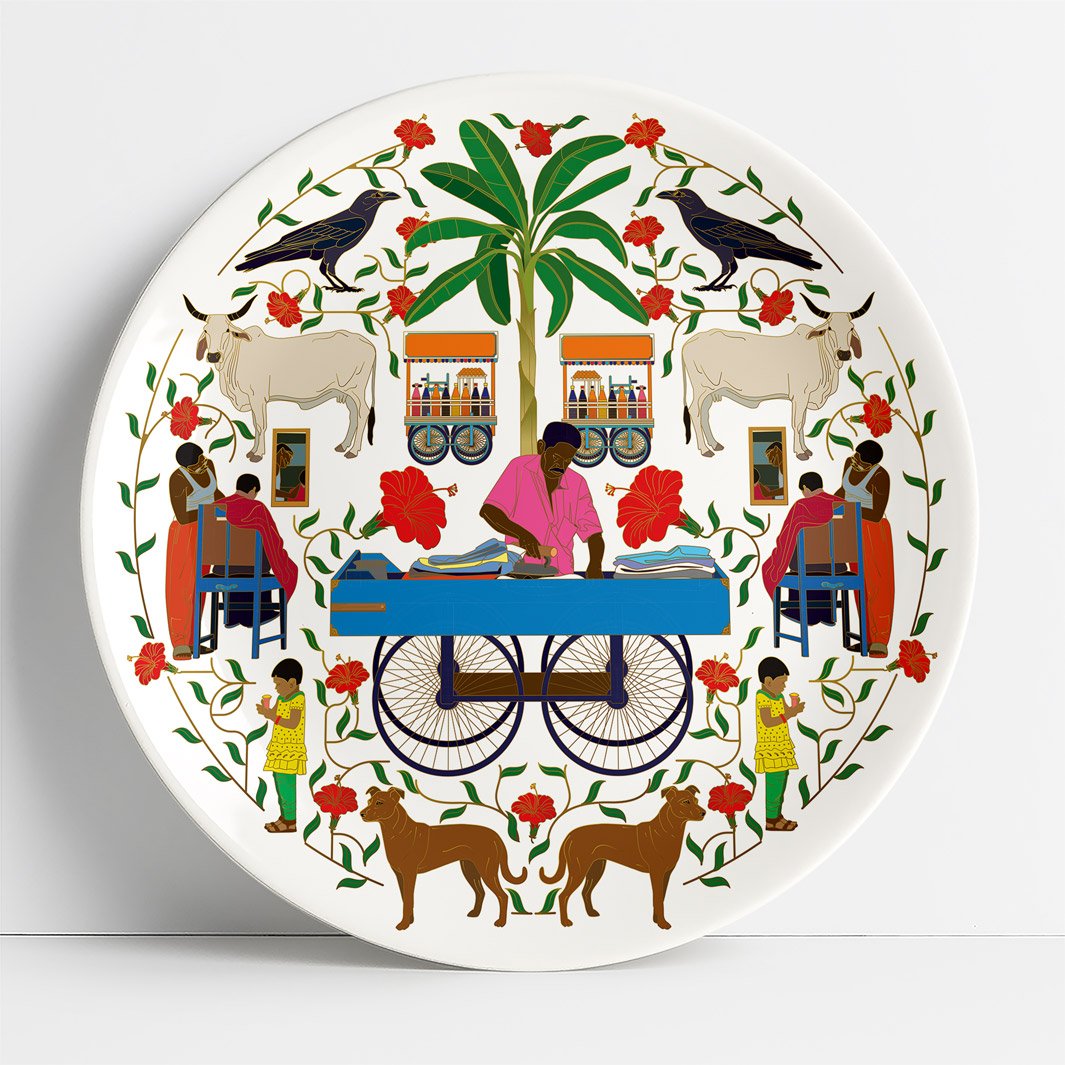Buy a Plate, Fill a Plate: A Unique Approach to feed the hungry
By Prerna Mullerpaten
Breezing between Moon and stars
In a world where it would be a struggle to live without escapism, having a multitude of options categorized under “art” can seem to take away the enigma that it shrouds itself in. It has been redefined in ways that go beyond just existing for the pleasure of the audience. Art seems to have finally found its purpose in fulfilling a societal need that it has never done before. We have illustrators advocating for the planet through strokes, singers calling out capitalism through lyrics, writers putting pain and real life struggles into beautiful characters and poets spewing truth bombs about the futile human existence in every verse. Art has evolved to become a hammer with which reality is shaped like it was envisioned.
One More Bite
This reminds me of our Independence struggle, when Bharathiyar dedicated his life to eradicating social evils of the time through his verses. The veil of elitism is lifted when an artistic expression speaks of a cause larger than its existence. It becomes more democratic. It no longer just remains behind glass windows in museums and galleries. It becomes a part of who we are as a society.
As if on cue, there are platforms that don’t need an artist to be accepted to a certain society to showcase their work. It has literally become free to present an artist and their work to the world. And through these platforms, it has become all the more easier to find that larger than life societal need that art was born to fulfill.
Midnight Light
The Plated Project sounds intriguing right from the start. Even though art on plates isn’t a rare phenomenon, it’s definitely rare to see art on plates contributing for a bigger cause – like feeding the hungry, something so common that it becomes a blind spot.
How?
“Buy a plate, fill a plate.”
In an art studio, tucked away in one of the most bustling areas of busy Bombay, a group of kind souls got together in the month of November 2019 and decided to simply come up with an idea that would help solve a social issue in a really unique manner.
Chitresh Sinha
Dhruvi Shah
Kapil Goswami
“There is a need to have conversations about how much it costs to provide for an individual meal. You won’t believe this, but it costs as low as Rs.3 to provide someone with an individual meal.”
A brainstorming session with the team led to banking on a decision to create art on a plate, and the eventual growth of The Plated Project.
On a journey to find out more about this issue, Mr. Sinha and his team came across startling statistics on hunger - though India is first on the list of the hungriest countries in the world, it is also a country that is known for its food surplus. An irony, having one of the largest public distribution systems and not enough access given to those in need. It is like having an overflowing bowl of food where all the excess is going to waste.
Joining forces with Save the Children, India, they decided to focus on malnutrition – emphasized on malnutrition among children as it was revealed that one in every four children, in cities, were also a victim of the cause.
Cartoon Cravings
With six artists on board, the project began with them having to illustrate, in their own styles, their happiest memories of childhood. They had one condition to adhere to - they were asked to leave 1/4th of the plate blank – to stand for the message that they were trying to get across.
“People would naturally become curious about the blank space, and ask questions. After all, art is about conversations.”
In a serendipitous (if Mr. Sinha himself says so) collaboration with Ms. Pooja Dhingra of Le 15, who readily came onboard to lend a hand, along with the artists’ contribution to the project led to what they called “A Quarter of Nostalgia,” which resulted in them being able to sponsor meals for 5,000 children, on Children’s Day.
Their next project, in March 2020, focused on sponsoring meals for 100,000 migrant workers who lost their jobs to the pandemic. “A Plate Full of Hope” came alive with contributions from global artists and company sponsors, Bajaj electricals, TREC, and Goonj, that made it possible for the team to achieve beyond their targets – they managed to sponsor meals for 175,000 migrant workers!
A shared bond
“New Beginnings” focused on the need to help traditional artisans of India, while the latest one is an open call for artists of all ages.
Coming up with themes wasn’t a challenge at all. We do, indeed, create art that imitates life.
In conversation with Dhruvi Shah, Chief Curator and Head of Design, art in India cannot be claimed by a single style, it’s an evolution we are going through. Most artistic creations focus on politics, the only difference being the individual twist on things.
“The art on plates should not only capture people’s attention by simply being aesthetically pleasing, but should also be the sole object of a conversation initiator.”
The artists are given much freedom to work on different mediums, but are asked to go beyond just what we see – they are story-tellers too. With minimal style, and space for a little bit of everything, projects allow artists to create art, as it should be – free.
“There is a story behind every single piece created, titles included.”
Where the streets have no names
The Plated Project wishes to build a community for artists to take their call on something beyond creating a piece of art and believing in something greater than their creations.
On a quest to make high-quality art more affordable, and contribute to causes to bring about a change in the world, the trio – Chitresh Sinha, Dhruvi Shah and Kapil Goswami, wish to change the way we look at art and its role in impacting the world.
A head full of dreams
An experiment turned out to provide for so many – creators and creations alike. With an objective to go further, the team wishes to be able to collaborate with many other artists and organizations, and eventually go beyond plates. Soon, they wish to work for other social causes, bringing with them a whole new slew of themes.
Art, in the end, makes space for all beings – a little something for everyone.










